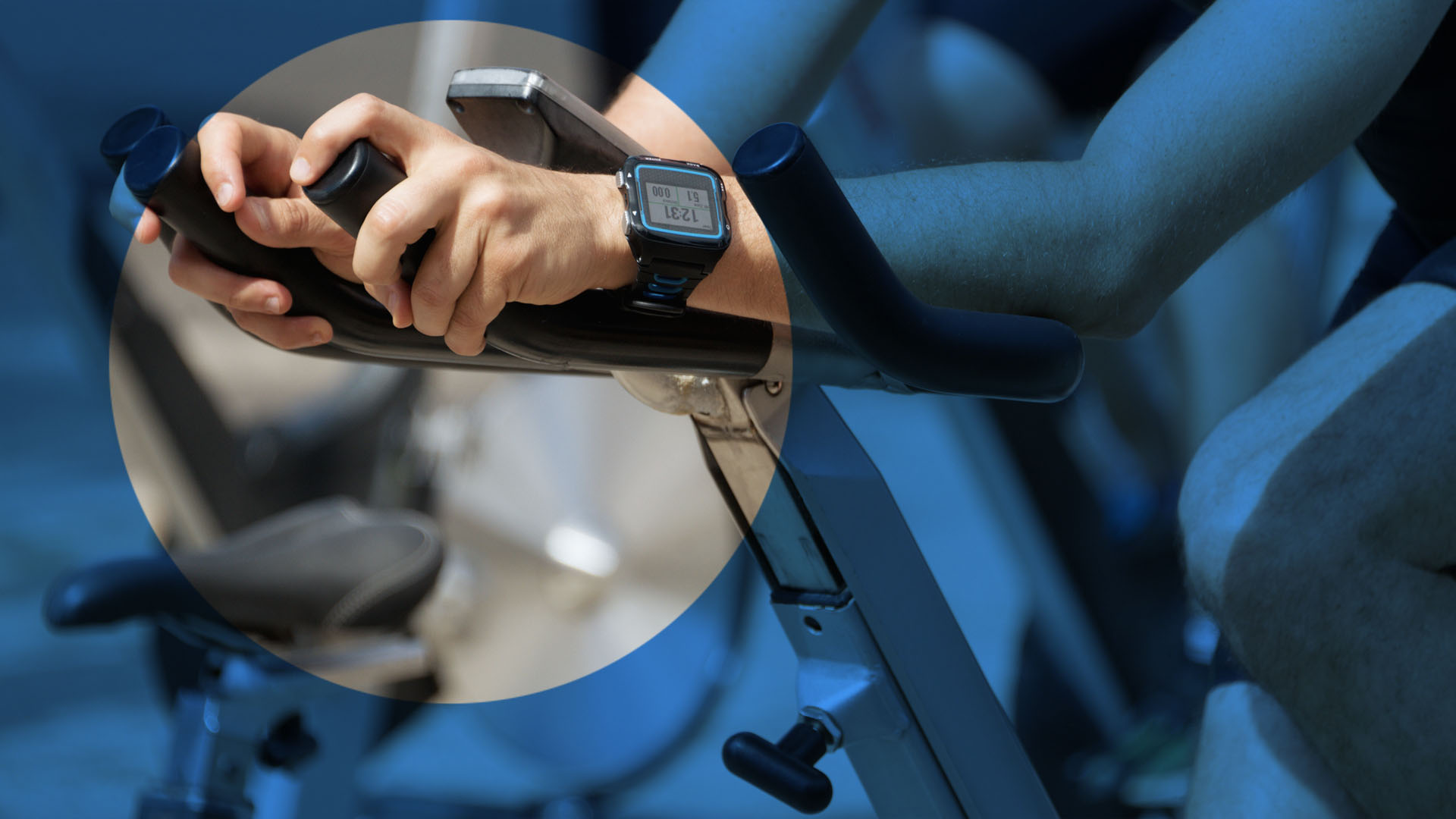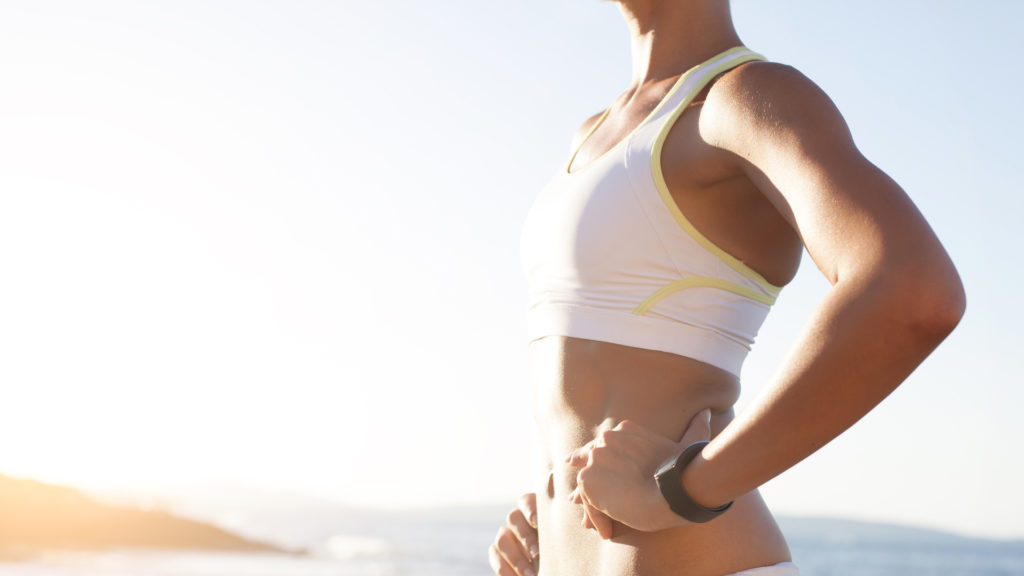
How many calories do you burn riding an exercise bike?

Staying fit and healthy takes on more importance, and maybe more effort, as we age. We want to get the most out of our time exercising, so it’s common to wonder just how many calories you burn doing various activities, including riding a stationary exercise bike.
The Calorie is a unit of energy. How many Calories burned in any exercise is a function of power and time. Outside of science, some people will use the word “intensity” instead of power.
With those two pieces of information, you can determine, and adjust, how much you get out of each session on an exercise bike.
Find What You Need
What is a Calorie?
A Calorie is a unit of energy. And no, the capitalization is not a misprint. The Calorie is a common unit to measure the energy in food in the United States. Every other country uses kilocalories (kcal) or kilojoules (kJ).
I’m a high school physics teacher so let’s go back to high school science for a minute. The metric unit for work, energy, and heat is the joule. (Rhymes with cool.) If you lift 100 grams 1 meter, you have done 1 joule of work. This also means you have used 1 joule of energy.
You might remember the calorie (lowercase) from high school chemistry. It’s the amount of energy needed to raise 1 gram of water 1 degree Celsius. It’s a slightly larger unit of energy that is equal to 4.2 joules, but it’s still pretty small.
That’s why the Calorie (capitalized) is often used for the energy content of food in the United States. There are 1,000 calories in a Calorie. The metric prefix for 1,000 is kilo so that’s why food labels in the rest of the world are in kilocalories or kcal (thousands of calories) or kilojoules or kJ (thousands of Joules). Food contains a tremendous amount of chemical potential energy so when dealing with food it’s convenient to use the kcal or Calorie.
How Do You Calculate Calories Burned?
A little math is required here but stick with me. To calculate the energy or Calories you burn you have to know two things only: power and time. Power can be thought of as intensity – how hard are you exercising. Time is more straightforward – how long are you exercising.
To calculate how many Calories you burn you simply multiply the power by the time. Intensity x duration. How hard you exercise by how long you exercise. The formula is straightforward.
Knowing how long you exercise is easy. Time it. That’s it. Nothing more.
Knowing the intensity is a bit more difficult. Trying to gauge how hard you’re working out is highly subjective. And there are lot of factors that can come into play. It might feel harder, but maybe you’re tired from staying up too late. You might be sweating a lot, but maybe the humidity is higher today.
The more accurate way is to use something called Metabolic Equivalent of Task or METs. These tables or on-line calculators factor the exercise: bicycling, walking, gardening, etc. and pair it with intensity and body weight. This computes a MET and then by multiplying by time, you get how many Calories you have burned. It’s still pretty subjective as you have to gauge your effort level or accurately estimate your pace but used objectively METs calculators work well.
Are you thinking there’s no way you’re going through this much hassle to calculate how many Calories you burn? That’s fine because there are shortcuts.
Almost every piece of exercise equipment comes with a built-in Calorie counter. As long as you input your height, weight, and age accurately into the bike it will do a very good job of telling you how many Calories you’ve burned because it is constantly monitoring the power being output by you and of course timing the whole session.
Many smartwatches can similarly give very good estimates of Calories burned during exercise as they monitor the movement of the watch and heart rate and get estimates of power. So, if you don’t like math (shame on your high school math teacher for not making it more fun), just make sure that exercise bike or smartwatch you are purchasing has a built in Calorie calculator.
How Many Calories Do You Burn on an Exercise Bike?
The most straightforward answer is: it depends. It all depends on power and time or in more common terms: intensity and duration.
Let’s look at some comparisons:
- Riding at low intensity for 30 minutes burns about 250 Calories.
- Riding at medium intensity for 30 minutes burns about 420 Calories.
Of course, there’s more than one way to arrive at the same number of Calories burned. Take a look:
- Riding at low intensity for 60 min = 500 Cal
- Riding at medium intensity for 48 min = 500 Cal
- Riding at high intensity for 36 min = 500 Cal
- Riding very high intensity for 23 min = 500 Cal
Did you know that if you walk, jog, or run a mile you burn about the same number Calories? One is less power but more time, and the other is more power and less time. When multiplied together you get about the same answer. That’s called an inverse relationship when one quantity goes up and the other goes down to get the same answer.
Not to sound like a broken record but the simple answer to the question “How many Calories do you burn on an exercise bike?” depends on … say it with me … power and time.
So, it all depends. If you have a set number of Calories you’d like to burn and you’re feeling good – go hard, you’ll be done in less time. Not feeling it today, that’s okay, dial back the resistance and be okay with staying on the bike for a bit longer.
One final note here is that there is strong evidence that exercising at higher power (higher intensity) has benefits even after you stop exercising. After a high intensity workout your body will continue to burn Calories at a higher rate compared to lower intensity workouts. Many studies like this one back up this claim. So, on days you’re feeling good, properly fueled, and well hydrated, go for it, you’ll get some extra Calories burned.
Does Heart Rate Matter?
A qualified yes.
Heart rate alone cannot be used to calculate Calories burned, but in general, during exercise, higher heart rates correlate to higher intensity and therefore more Calories burned in a given time interval.
Does Age Matter?
A qualified no.
In terms of burning Calories on an exercise bike, age does not matter. However, as you age you might find it more difficult to reach the same maximum or “zone” heart rates you did in previous decades. Part of this is due to the aging process and part of this is due to lifestyle changes. And let’s be clear, before starting any new exercise program or making significant changes to an existing one, consult with a medical professional. That’s an order.
Does Resistance and RPM matter?
An unqualified yes.
Resistance, whether it’s a dial, button, or the bike does it automatically, is one of two ways to increase intensity. The other way is RPM. RPM stands for Rotations (or Revolutions) Per Minute. Cyclists like to use the word “cadence.”
Think of resistance and RPM like you do power and time. They get multiplied together to arrive at intensity. Want more intensity in your workout? Pedal at a higher RPM … or … increase the resistance. Both factors matter for intensity, so both matter for burning Calories.
Be careful though, increase the resistance and slow your RPM and you might be at exactly the same intensity. Likewise, a lower resistance and higher RPM might also yield the same intensity. And that’s okay; playing with both factors adds variety even if they are not really changing how many Calories you are burning. Of course, increasing both resistance and RPM will definitely increase the intensity!
Most exercise bikes will display RPMs. Typically you want to keep your RPMs between 60 and 100. Nothing wrong with going above or below those numbers for comfort or variety. For comparison, professional cyclists average about 70 RPM in the mountains and 90 RPM on flat roads and time trials.
Does Body Weight Matter?
For sure.
The number of Calories burned on an exercise bike varies with body weight. The more your body weighs, the more Calories you will burn in all activities. On an exercise bike this is especially true when you stand up to pedal. All the numbers used in this article assume a body weight of 175 pounds.
How Does Stationary Biking Compare to Other Exercise?
Here is a list of activities that burns about the same number of Calories as outdoor cycling at 12 mph or medium intensity on an exercise bike:
- medium intensity aerobics
- hard paddling in a kayak or canoe
- hiking uphill
- low/average racquetball
- walking/jogging 13 minutes per mile
- singles tennis
- swimming 50 yards per minute
- low intensity cross country skiing
Cycling at medium intensity on an exercise bike burns about twice as many Calories over the same time interval as bowling, vacuuming, and ping pong and about three times more Calories than horseshoes and shopping.
Summary
How many Calories you burn on an exercise bike all comes down to high school physics: power x time = energy. In more common terms intensity x duration = Calories. That’s it.
Increase intensity or duration or both and you are burning more Calories. And increasing power is a function of resistance and RPM.
Want the most Calories possible? Dial up the resistance, pedal fast, and go for as long as possible.
But don’t forget that you’ll only stick with it if you like it. Mix it up both during the workout and day-to-day. Have some good playlists to listen to. Listen to a podcast or audiobook. My favorite: pair the exercise bike workout with whatever you are binging on your streaming service for guilt-free watching. Or do it with a group –I get great ideas for my own workouts every time I attend a spin class. How many Calories you burn during a particular workout is less important than making it a habit that you enjoy.




